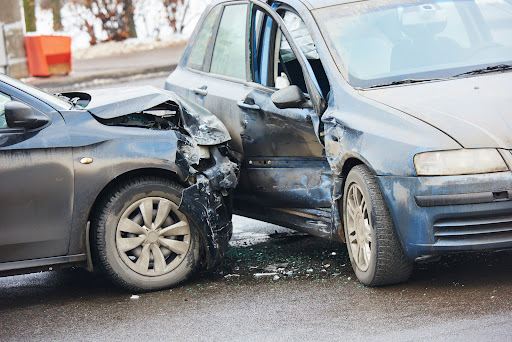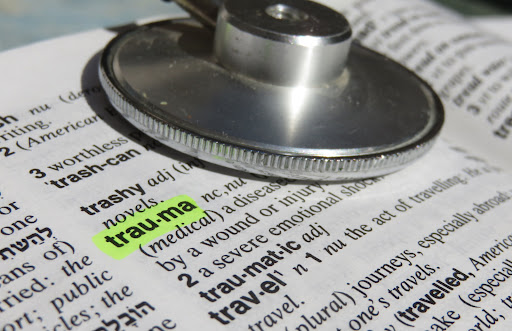T Bone Car Accidents in Louisiana
T-bone crashes, also known as side-impact collisions or broadsides, are some of the most deadly crashes on Louisiana roads and highways. According to the National Highway Traffic Safety Administration (NHTSA), T-bone accidents account for nearly 20% of fatal collisions—more deadly than any other collision type.

What exactly is a T-bone accident, and how common are they? How do courts determine fault in a T-bone collision? What can you do to keep yourself and your passengers safe from broadside crashes?
The car accident injury lawyers at Gordon McKernan Injury Attorneys have plenty of experience helping victims of T-Bone crashes find the compensation they need to heal from their injuries. Read on for answers to the above questions and more.
What is a T-Bone Accident?
A T-bone accident is also known as a side impact or broadside collision because it involves one car hitting another’s side, forming a rough 90° angle or T shape. T-bones can be some of the most dangerous accidents for the passengers of the impacted vehicle because the only thing shielding them from impact is the door and side of the car.
T-bone accidents most commonly occur at intersections, when one driver disregards traffic lights or other signals, fails to yield right-of-way, or misjudges a green light. They drive into the intersection at the same time as cross traffic, leading to a broadside impact.
Other than intersections, T-bones can also occur on the highway when a driver loses control and skids across traffic. Side-impact collisions can also happen in parking lots when a driver backs up into or in front of a passing vehicle.
Determining Fault in a T-Bone Accident
Multiple parties can be found at-fault for a Louisiana T-bone accident. That’s one of the main reasons you need an experienced car wreck lawyer to help determine the liable parties after you’ve been in a T-bone wreck. Some of the more common liable parties include the following:
The Drivers Involved
Either or both drivers can be found liable for a T-bone accident, depending on who disregarded traffic laws. For example, if a driver runs a red light and strikes a driver on the side, the driver at the bottom of the T is at fault. However, if the impacted driver, the one at the top of the T, ran the light, they can be found at fault.
If the drivers dispute who had the right of way at the time of the collision, or if the situation is more complex, the drivers may share fault for the collision. The amount of liability each driver holds for the accident will depend on the particulars of the case and the quality of evidence available, which is why a lawyer is important.
Another Driver
Sometimes, the person who caused a T-bone collision can evade the collision altogether. For example, if you get cut off by another driver and swerve to avoid a collision, only to T-bone another car, that first driver is the one who’s really at-fault for the collision.
All drivers involved have a legal obligation to remain at the scene, but they don’t always do so. Witness statements, police reports, and other evidence are highly important in cases like these to hold those responsible accountable for their actions.
Other parties
Other parties that could be found liable in your T-bone collision include
- Government entities who haven’t properly maintained roads ro traffic signals
- Car manufacturers who didn’t build needed safety features or driving features into their vehicle
- And others
Common T-Bone Accident Injuries
Because of the forces involved and the crash configuration, T-bone accident injuries can be especially harmful, especially for those in the top of the T. The side of most vehicles comes with much less protection than the front or back, and even if equipped with side airbags, they don’t always afford sufficient protection against injury.

Common injuries resulting from T-bone accidents can include these and others:
- Head or neck trauma, like whiplash or spinal cord damages
- Broken bones
- Burns or cuts on the head, face, or body
- Penetrative injuries, like punctured lungs or other organs
- Back trauma, including paralysis
Reduce the Risk of a Broadside Crash
While you can’t control every other driver on the road, you can control your own actions. One of the best ways to try and avoid T-bone crashes is to drive defensively, especially at intersections. Remember that the right-of-way cannot be taken, only given: if you’re not sure whether you have it, yield to the other driver to keep everyone safe.
During a side-impact crash, there are a few evasive maneuvers that research suggests may help in mitigating your and your passengers’ injuries. The going theory is that, if you can steer sharply away from the force of impact, you may be able to move the occupants of your vehicle further to safety. However, this is merely a theory at this time, and more research is needed.
What to Do If You’re a T-Bone Accident Victim
If you’ve been the victim of a T-bone accident, you might be suffering major injuries and expensive property damages, and you could be facing lost work, mounting medical bills, and more. You need a personal injury lawyer who’s dedicated to your case and getting you the care and compensation you deserve.

Gordon McKernan Injury Attorneys are Louisiana car accident injury lawyers with years of experience and proven results. Over our decades of practice, we’ve won our clients $3 Billion in damages from insurance and the courts. We’re skillful researchers, aggressive litigants, and compassionate advocates for your case, so you can trust us to get you the maximum compensation you deserve.
If you or a loved one were injured in a side-impact collision, give the T-bone car accident lawyers with the Get Gordon team a call at 888.501.7888. We promise that you won’t owe us a dime until we win or settle your case!

